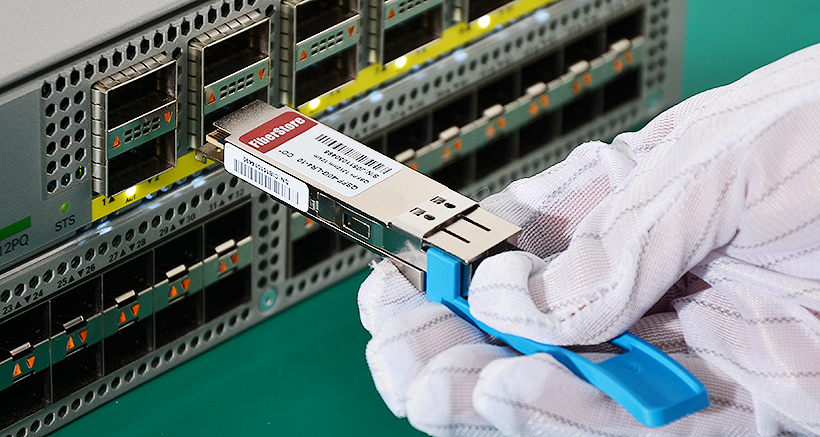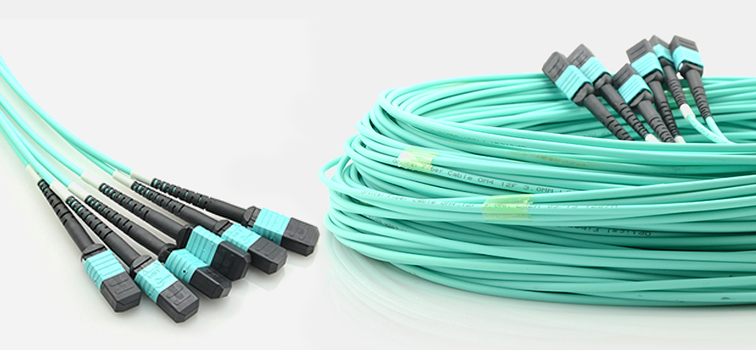As applications such as Big Data, Cloud and Internet of Things are brought to a variety of industries, the demand for high speed transmission is increasing rapidly ever since. Therefore, the 10GbE (Gigabit Ethernet) can no longer fulfill these requirements. So there arrives at a consensus in the industry for transmission network migration to 40/100G. The 40G severs as an excellent and economical solution to satisfy the current need for data transmission, whereas the 100G is proved to be less cost efficient and the technology of it is still immature, which makes the 100G currently beyond the reach of average companies. Nowadays, the servers are well prepared to carry the transmission of 40 Gbps in many data centers since the core technologies of 40G are advanced step by step. Besides, the cost of deploying 40G decreases as an increasing number of manufacturers are competing with each other for the 40G market.
Comparing with 1G migrating to 10G, there exists a much larger span for 10G migration to 40G with regard to transmission data rate and technologies. Thus, the deployment of 40G migration is much more complicated than that of 10G. Three factors must be taken into consideration to increase the reliability and manageability for 40G migration, which are fiber optic transceiver, transmission media, and pre-terminated MPO assemblies.
Fiber Optic Transceiver
Fiber optic interconnection plays an indispensable role in today’s telecommunication network. Photoelectric conversion pertains to a necessary part of fiber optic network. The function of fiber optic transceiver is photoelectric conversion, which makes it one of the most commonly used components in the data center. Without it, the data center cannot run normally.
As for 40G migration, transceivers of two different package forms are commonly used: QSFP+ transceiver (Quad Small Form-factor Pluggable Plus transceiver) and CFP transceiver (C Form-factor Pluggable transceiver). QSFP+ transceiver is more popular in 40G application. A single 40G fiber optic transceiver may not be expensive. However, thousand of optical transceivers might be needed for a medium-sized data center, thus the total cost of optical transceivers can be a large sum of money. While the switch market has already been monopolized, the transceiver market is not. Third party transceivers that are compatible with various types of switches are offered in today’s market. They can perform as well as the original brand transceivers with less cost. So, many data centers begin to take compatible transceivers as one of their options. As cost serves as one essential aspect in 40G optical transceiver selection, quality also attaches more importance since not all the third party transceivers are created equal. Selecting the 40G compatible transceivers from a company that assures 100% compatibility and interoperability is necessary. The picture above shows the testing of Cisco compatible QSFP-40G-LR4 transceivers on a Cisco switch to ensure its compatibility and interoperability.
Transmission Media
40G standards of IEEE have already been announced several years ago. To meet various situations, there exists standards for different transmission media. Although fiber optic cable is becoming more and more popular, there is still a place for copper cable in the data center. Standards for both copper and fiber optic are being used. Commonly used 40G Ethernet media systems including:
- 40GBASE-CR4: 40Gb/s Ethernet over copper cable in short transmission distance.
- 40GBASE-SR4: 40Gb/s Ethernet over four short-range multimode fiber optic cables.
- 40GBASE-LR4: 40Gb/s Ethernet over four wavelengths carried by a signal long-distance single-mode fiber optic cable.
Then, here comes the old question: fiber optic cable or copper cable, which one should be adopted in 40G migration? Although copper is cheaper in terms of the price, it can only support 40G transmission limited to several meters. Whereas single-mode fiber optic cable supports the 40G transmission distances up to 10km. For multimode fiber optic cables, OM3 and OM4 are supposed to support short distance transmission. The longest distance that OM3 can support for 40G transmission is 100 m, while OM4 can support a longer 40G transmission distance of 150 m. The selection of transmission media should depend on the specific applications.
MPO Assemblies for 40G
According to the IEEE standards, 40G multimode Ethernet transmission uses four multimode fiber optic cables. The IEEE 802.3ba standard also specifies multi-fiber push-on (MPO) connector for standard-length multimode fiber connectivity. Most of the 40G multimode Ethernet transceivers are based on the MPO technology. It is wise to increase fiber optic density by using MPO technology, but a new problem comes up. Cabling and splicing difficulties in data center increase with the accelerating number of fiber. Unlike traditional two-strand fiber connections, MPO connectors cannot be terminated easily. So, most of the data centers choose the pre-terminated MPO assemblies (as shown in the picture above) in 40G deployment, which is more reliable and can save human labor. Before cabling, it would be time-saving and cost-efficient to determine the cabling lengths and customized pre-terminated MPO assemblies with manufacturers.
Conclusion
During the process of migration to 40G, to select a compatible third party transceiver of high quality would contribute to decrease the money and time spending on data transmission. With the combination of specific applications and characteristics of 40G transmission media, it helps to achieve a rather economical and reliable 40G deployment task. Furthermore, pre-terminated MPO assemblies can necessarily ensure flexible and manageable cabling in 40G deployment. 40G has already become the tide of today’s data transmission and it plays a significant role in the history of network transmission.



No comments:
Post a Comment